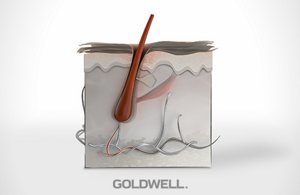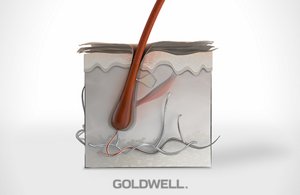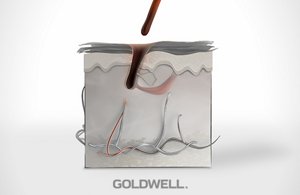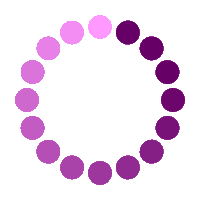- Goldwell
- Education
- Hair Science
- Hair Facts
- The Growth Cycle
HAIR GROWTH CYCLE
The hair root, called the follicle, is located inside the skin and begins to develop before we are even born.
The follicle is where all the elements needed to create what we know as hair come together:
Cell growth
Keratin building
Dehydration
The follicle is fed by small blood vessels allowing the trychocytes to build the matrix cells through cell division thus allowing the hair fiber to push up and out. In essence to grow. While this is happening, melanocytes are also adding color to the matrix cells, creating hair color. The new cells then need to squeeze through the bottleneck shape of the root, making the trychocytes longer and transforming them into the cortex.
The hair remains attached to the follicle, though the outer funnel shape allows the hair to move freely.
HAIR TYPES
Hair is grouped according to follicle size. There are three basic groups:
Lanugo
Vellus
Terminal
LANUGOS
Lanugos hair is the first hair fiber produced by a follicle, before a baby is even born. It begins to develop as uniform, synchronized growth after the 20th week of a pregnancy. Just before birth, the hair becomes either Vellus or Terminal.
VELLUS
Vellus hair is short, fine and contains no pigment. It is the fuzzy hair that covers the face, and is the only follicle without a sebaceous gland.
TERMINAL
Terminal hair comes from the largest follicles. It is long and coarse, pigmented and often contains a medulla. Terminal hair can be found growing from the scalp, the beard, eyebrows, eyelashes and pubic hair. It is very thick and capable of switching back to Vellus hair production before again becoming Terminal.
HAIR CYCLE

PHASE 1
The Anagen phase is when 85 to 90% of hair is in the growing phase. It continues to develop and grow for 6-7 years.

PHASE 2
In the Catagen phase the hair stops growing. There is no more material produced and the contacts between the follicle walls and the fibre shaft cease. This transitional phase lasts for approximately 3-5 Month. At any given time, 1% of hair is in this phase.

PHASE 3
This is the Telogen phase. It lasts a few weeks with 10 – 15% of hair is in this phase after which it falls out.

PHASE 4
In the Exogen phase the follicle still rests and the hair fibre can easily be removed by light mechanical force (brush, comb). It lasts for days. Empowered by hormones the hair follicle starts again with the Anagen phase and resume protein production. If hormones are missing the follicle can remain dormant or even retract into the skin.
The average scalp contains up to 150,000 individual hairs, or approximately 200 hairs per/cm2. Each day, the average person looses between 80 and 100 hairs. This isn’t an issue as long as follicles continue to produce new hair. Each follicle, or root, can produce 10 to 12 hairs in a lifetime. With 150,000 follicles that means approximately 1 million hairs with a total length of 1000 kilometers.
The natural cycle of a hair’s life is approximately 6 to 7 years. However, we can stimulate it with various massage techniques along with special ingredients.
HAIR LOSS
People with hair loss loose significantly more than 100 hairs per day. Hair loss is classified as reversible (temporary) and irreversible (permanent) loss.
One of the biological reasons for hair loss is a premature transition from the growing phase to the phase of rest. Another one is the decrease of the hair follicle usually caused hormonally (for men). External factors like insufficient nutrition, stress, medicine or mechanical influences (low quality combs and brushes) can also play an important role.
Reversible hair loss caused by external factors can be suppressed quickly by an adequate treatment. In case of biological reasons the status of the follicle may tell whether the hair loss is reversible or not. Clients with extreme forms of hair loss should contact their doctor.
BY THE WAY
If you’ve ever experience hair re-growth where the hair seemed to be growing in the chemical color you applied several weeks ago, that hair is in either the Catogen or the Telogen phase.
Learn more about Hair Facts here.
- Goldwell
- Education
- Hair Science
- Hair Facts
- The Growth Cycle
USE OF COOKIES
We require your consent to the use of cookies before you can visit this website. I consent to the of cookies.
If you want to know more about the cookies this site uses or about cookies in general, please click here.
COOKIES
We are sorry that you have decided not to use cookies.
Unfortunately, our website does not work optimally without the use of cookies. Hence, you will be unable to visit goldwell.com.
If you would like to change your mind and authorize the use of cookies at this time, please click here.
COOKIE POLICY
WHAT IS A COOKIE?
A cookie is a small text file a web portal installs on your computer, tablet or smartphone when you visit the portal. Cookies can help us in many ways, they make it for example possible for the portal to remember certain entries and settings (e.g. login info, language, font size and other display preferences) for a specific period of time so you do not have to re-enter this information every time you visit and navigate the portal., for example, by allowing us to tailor a Web site to better match your interests or to store your password to save you having to re-enter it each time. Furthermore, when you visit our website you may notice some cookies that aren't related to us. If you go on to a web page that contains embedded content, you may be sent cookies from these websites. We don't control the setting of these cookies, so we suggest you check the third-party websites for more information about their cookies and how to manage them. If you do not wish to receive cookies, please configure your Internet browser to erase all cookies from your computer’s hard drive, block all cookies or to receive a warning before a cookie is stored.
Here's a list of the cookies we use and what we use them for.
These cookies are used to protect Goldwell’s font from being used by other websites: Cookie Acceptance, Typo3: fe_typo_user, gldwsec
When you visit our website, you may notice some cookies that aren't related to Goldwell. If you go on to a web page that contains embedded content, you may be sent cookies from these websites. We don't control the setting of these cookies, so we suggest you check the third-party websites for more information about their cookies and how to manage them.
Google uses Cookies to distinguish users and events on the website. Google Analytics tracks unique visitors. Stored in this cookie is a unique visitor ID, the date and time of their first visit, the time their current visit started and the total number of visits they have made. Google uses Cookies to decide whether a visit has timed out and also how deep a visit has gotten. The Data is used to analyze the user interaction on the website. The tracked data is anonymous. It also uses the data to measure conversions and helps us to improve our website.
(AddThis, Bidswitch, AdRoll, Taboola, Rubicon Project, Pubmatic, AdTech, Advertising.com)
Cookies of these third parties are used for measuring the conversion on our web presence. This anonymous information is used to determine the value of and to settle with an advertising partner.
These cookie collects anonymous data about user visits to the site, such as: for example, the number of visits, the average time spent on the website, geographic location, and which pages were loaded, with the goal of displaying targeted ads.
Based on the Cookies it can be identified which Banners you have visited on the website of an advertiser, we are using the information to improve our adverts.
These cookies are used by Instagram as soon as the Instagram plugin has been activated on our website. For more information on the type, use and purpose of these cookies, please click the following link: https://www.instagram.com/about/legal/privacy/#
These cookies are used by Pinterest as soon as the Pinterest plugin has been activated on our website. For more information on the type, use and purpose of these cookies, please click the following link: https://about.pinterest.com/en/privacy-policy
These cookies are used by YouTube and/or Google as soon as a video has been integrated on a site and/or has been played. For more information on the type, use and purpose of the cookies, please click on the following link: https://www.google.com/intl/en/policies/privacy/
These cookies are used by Facebook as soon as the Facebook plugin has been activated on our website. For more information on the type, use and purpose of these cookies, please click the following link: https://www.facebook.com/policies/cookies/
These cookies are used by Twitter as soon as the Twitter plugin has been activated on our website. For more information on the type, use and purpose of these cookies, please click the following link: twitter.com/privacy
You can randomly manage and/or delete these cookies. You can delete all of the cookies stored on your computer and you can set up most browsers in such a manner that the archiving of cookies is prevented in the first place.
However, if you do this, you may have to manually adjust some settings every time you visit and live with the impairment of some of the functions.
HOW WE USE COOKIES AND FOR WHICH PURPOSE:
Cookies hosted by Kao
Cookies hosted by Third parties
Google
Advertisement
Instagram
Pinterest
Youtube
Facebook
Twitter
CONTROLLING COOKIES
USE OF COOKIES
We require your consent to the use of cookies before you can visit this website. I consent to the of cookies.


